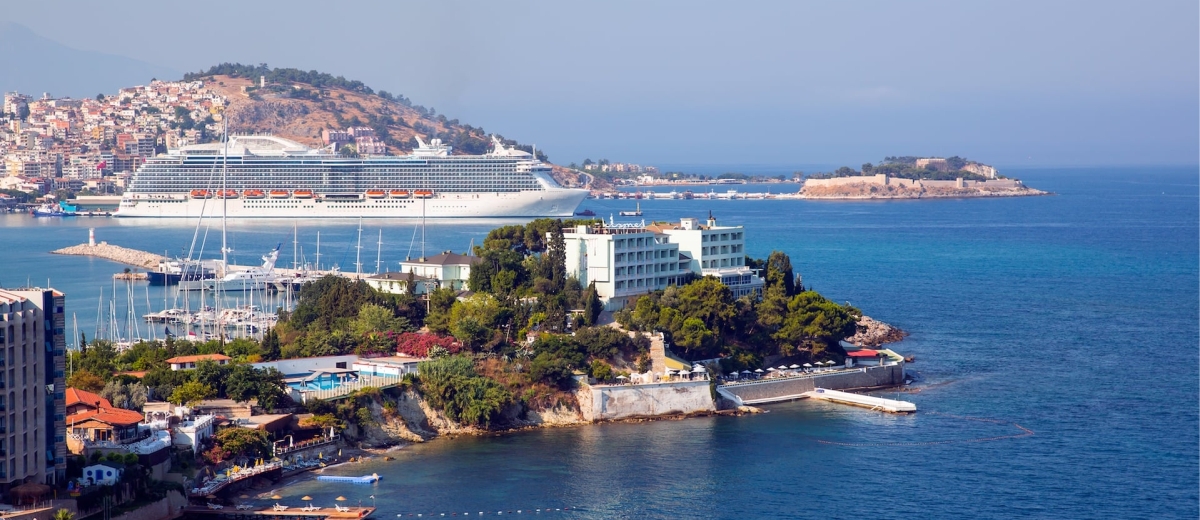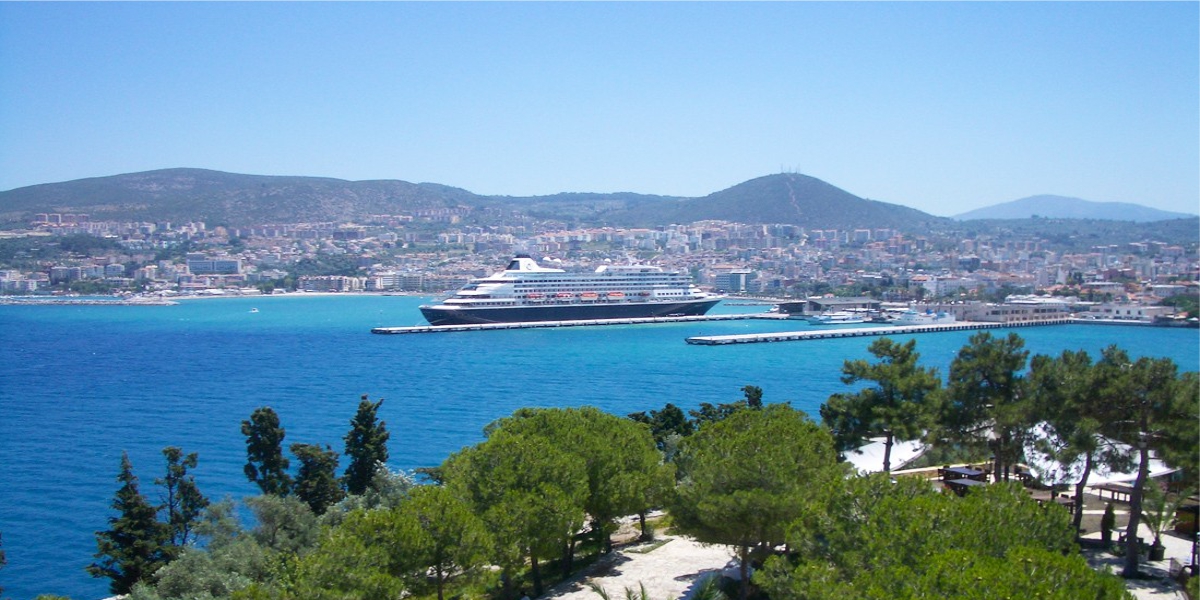

Kusadasi
Kusadasi is county of Aydın City and is situated 71km northwest of Aydın and 95 km from İzmir City centres respectively.
Kusadasi, located on the Aegean shore, is one of the prominent tourism spots of Turkey.
The surface area of Kusadasi is 264 Km2 and the registered population is 103.849 people, according to census records carried out in 2016.
It is presumed that the first establishment was on the Yılancı Cape near Kusadasi by Ionians under the name of “Neopolis” and was under the ruling of Ephesus.
The city was founded on the skirts of Pilavtepe known as Andızkulesi initially. This Byzantium shore was dominated by the Venetians and Genoese for a short period of time and due to the city access difficulties Kusadasi was moved from its existing location of Andızkulesi to its current location of Yeni İskele (Scala Nuova).
Kusadasi Bay was named after the city and its periphery were known as art and culture centres. This territory has been home to multiple civilizations since its establishment in the ancient times.
Whereas Lelegs were ruling the area around 30000 B.C., Aiols and Ions ruled around 11th Century B.C. and 9th Century B.C., respectively. The area between Greater Menderes and Gediz Rivers was referred to as ‘Ionia’ in the ancient times. Merchant and sailor Ions prospered in short period of time owing to overseas commercial activities and gained superior political strength due to this. This civilization also established 12 cities known as “Ionian Colonies” in the history.
Kusadasi was one of the important harbours of Anatolia as a gate to Mediterranean and was called “Neopolis” in the antique period. Around 7th Century B.C., Lydian, with its capital city of Sardes, began dominating the region.
Persian ruling of the area starting from 546 B.C. prevailed until 334 B.C when Alexander the Great captured Anatolia. Thereafter, a brand-new era, a brand-new art and culture understanding as a synthesis of both Helen and domestic Anatolian civilizations dominated the territory and was called “Hellenistic Period” era. Ephesus, Miletus, Prynne and Didyma were the most popular cities of this period.
This followed the Romans conquering the region in the 2nd Century B.C and in the preliminary period of Christianity, with the arrival of Virgin Mary and one of the 12 apostles St. Jean this location became known as a sacred place of worship. Miletus was centre of episcopalism in the Christianity period and it was called “Ania” in the Byzantium period. Kusadasi became a harbour used by pirates in the medieval age. Then around 15thCentury, Venetians and Genoese named the port as “Scala Nuova”.
In 1086, Suleiman Shah I conquered the region for the Seljuk State starting the Turkish dominance. The port became an export gate to Aegean Sea through caravan connections deep into the Anatolia. However, Seljuk dominance did not last long due to the 1st Crusader Campaign and the region was captured by Byzantium once again. Menteşoğulları was controlling the region by the end of 1280s until its capture by the Ottomans around 1397-1402. This was followed by ruling of Aydınoğulları in the period of 1402-1425 up until Ottomans’ permanent dominance over the region in 1425.
Kusadasi was captured by Ottoman Sultan Mehmet I (Çelebi) in 1413. After this period, the area remained in Turkish ruling completely and Turkish monumental buildings started to fill the city. One of these monumental structures is what is known as Caravanserai of today and the fortification walls surrounding the city built by Mehmet Pasha in 1618.
In its ancient time, Kusadasi had three gates giving access to the city. . Today, only one of these gates exists and is located between Barbaros Hayrettin Pasha Street and Kahramanlar Street separating them from each other. Upper section of this gate is used as City Traffic District Commandership.
Isle of Küçükada and Güvencinada, an important military base in the Byzantium period, was renovated extensively in 1834 and its famous fortress was built constituting the origin of the name of “Kusadasi” city.
During the Independence War, Kusadasi was invaded by Italians in the period of 1919-1921; then upon their retreat, occupied by Greece. Finally, it was cleared from all enemy invasion on September 7th, 1922, the date which has been declared Kusadasi Independence Day.
